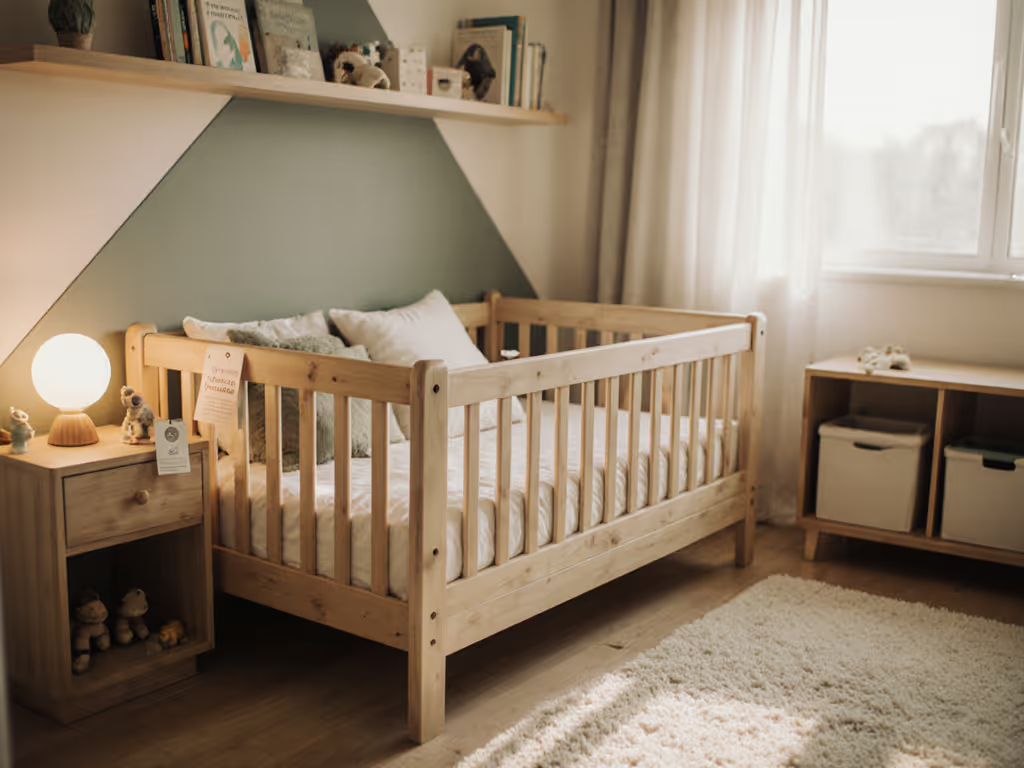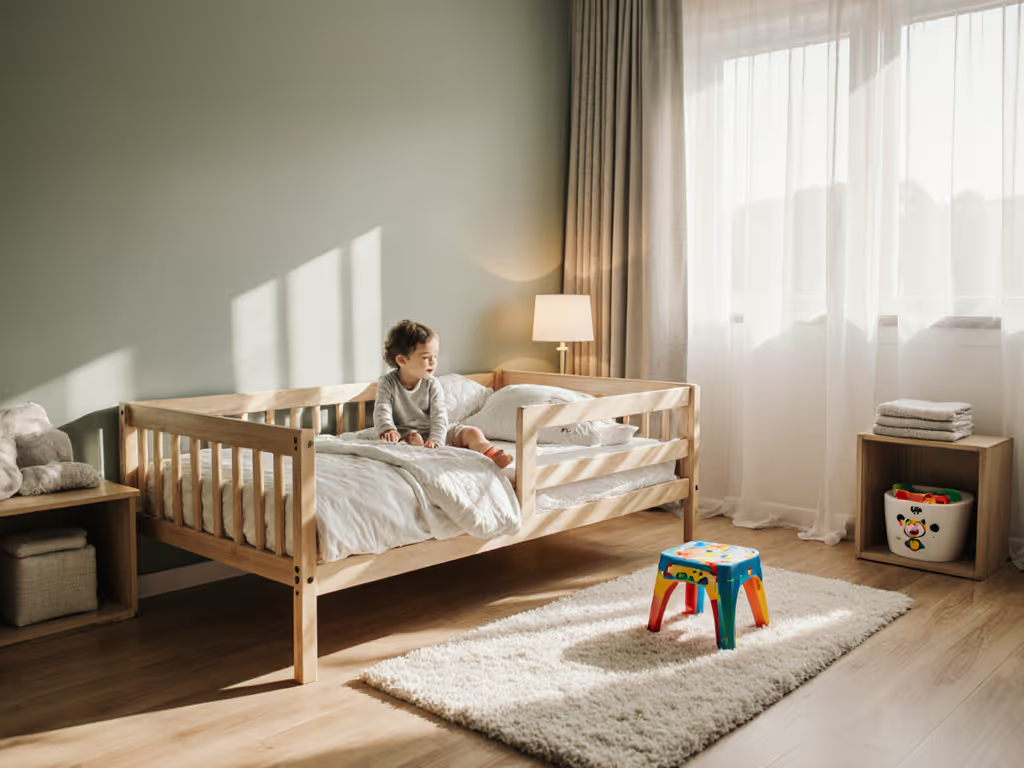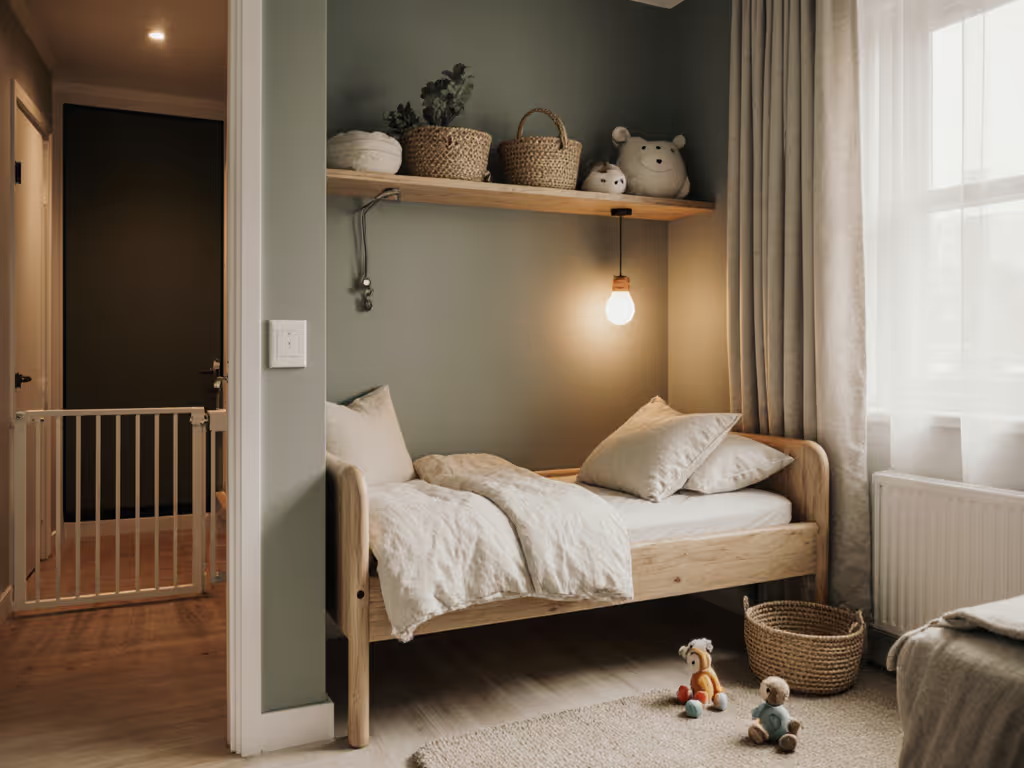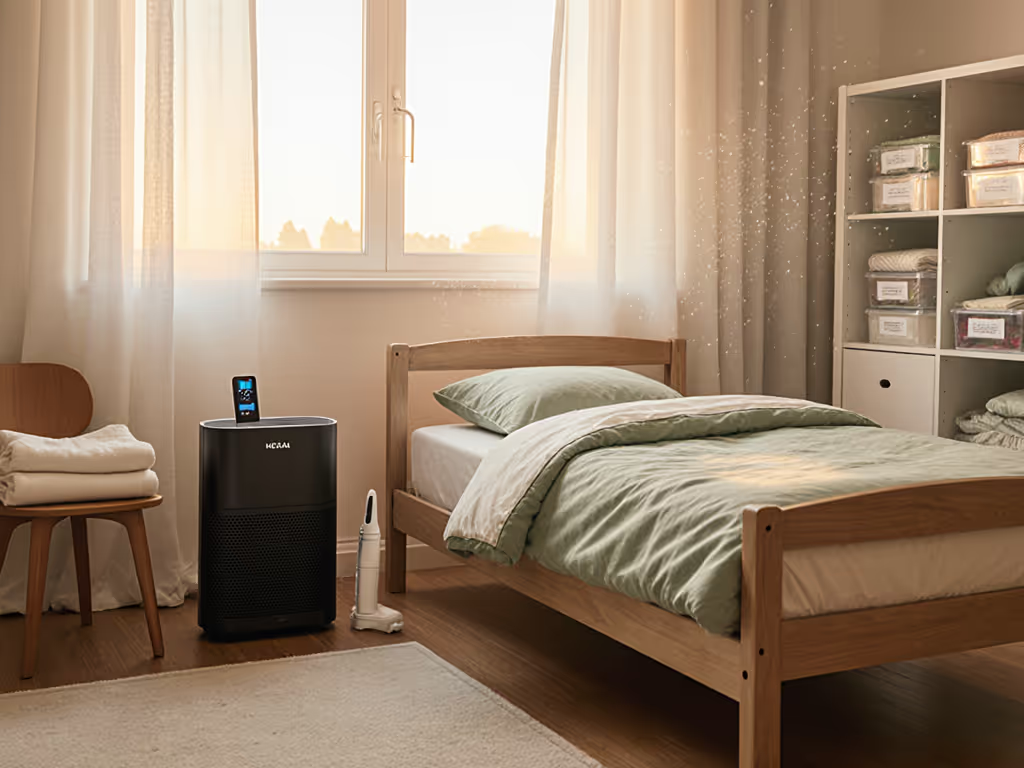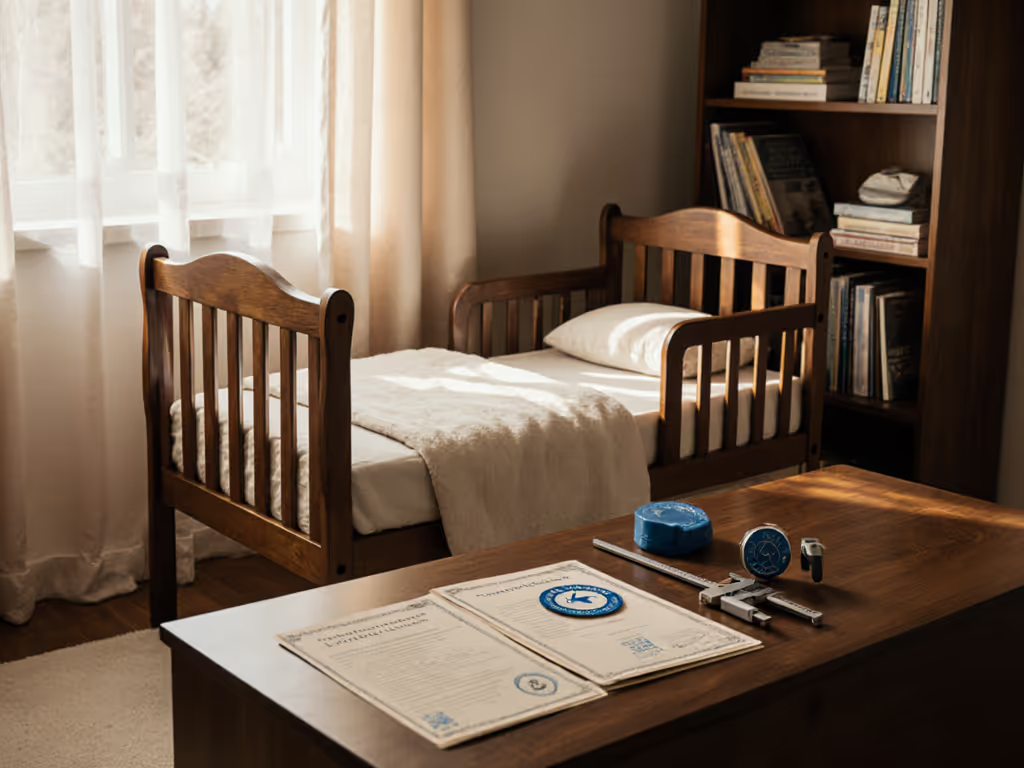
Age-Specific Toddler Beds: Safety-First Picks for Tight Rooms
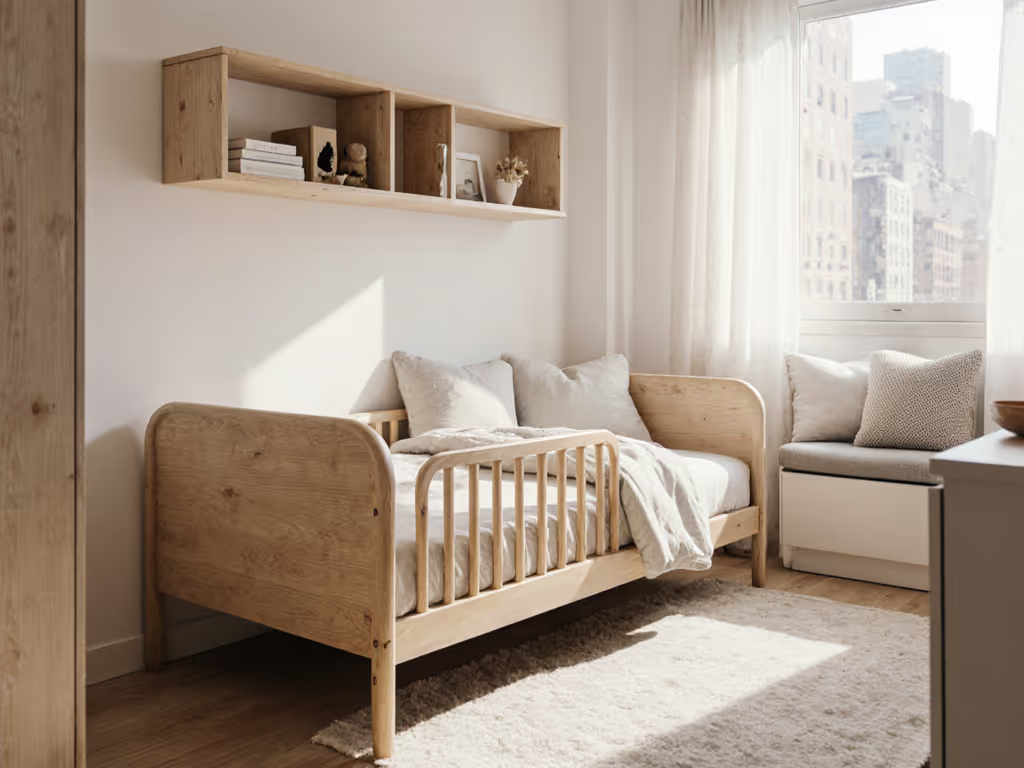
When space is tight and safety stakes are high, age-specific toddler beds aren't just convenient (they're non-negotiable). Forget one-size-fits-all solutions; your child's developmental stage bed recommendations must align with their physical capabilities and room constraints. In cramped urban apartments where every inch counts, a poorly matched bed becomes a hazard zone overnight. I've seen too many "stylish" beds fail the real-world test: blocking emergency exits, creating entrapment gaps, or toppling under a determined climber. Safety should feel boring, and that's beautiful. Let's cut through the noise with evidence-backed checks for your micro-space.
Why Age-Specificity Matters in Confined Spaces
Standard toddler beds often assume sprawling bedrooms. But in apartments under 1,000 sq ft, mismatched sizing creates compound risks:
- Entrapment gaps when beds hug walls (a 3"+ space behind the mattress suffocates)
- Door swing interference blocking emergency exits
- Center of gravity failures in narrow aisles where kids vault off walls
ASTM F1821 standards set hard limits: slats ≤2.375" apart, guardrails ≥5" above mattresses, and maximum 50-lb weight limits based on structural weak points. Yet most parents only learn these after a fall. For a quick check on rail heights and room hazards, see our 5-inch guardrail safety guide. Your child's age dictates which risks dominate:
Toddler Beds for 18 Months: The Escape Artist Phase
At 18 months, toddlers average 22-24" tall and 30 lbs, but can hoist themselves unpredictably. If your child climbs crib rails once, transitions are urgent (per CPSC data on 35"+ fall risks). If escapes begin post-transition, use our toddler bed escape troubleshooting to keep nights calm and safe. Prioritize:
- Edge radius >1" (test with a quarter: if it fits in corners, so could a skull)
- Max height 12" from floor (measured at highest rail point)
- Anchoring hardware embedded through frame (not surface-mounted)
Critical check: Sit on the assembled bed. If it wobbles at all when you shift weight, it's unstable at 3 AM. Walk-up delivery apartments reject heavy bases? Compromise never. Boring and low beats pretty and risky every time.
Toddler Beds for 2 Year Olds: The Night-Wandering Stage
Two-year-olds average 35" tall and 34 lbs with improved balance, but new dangers emerge. They'll test rails like jungle gyms, seeking leverage points. Avoid beds with:
- Decorative cutouts (creates limb-trap voids)
- Tall corner posts (snags sleepwear, causing strangulation)
- Single-point guardrail attachments
Instead, demand dual anchor points per rail section and 100% solid wood construction (no hollow particleboard). VOC disclosure sheets should list all finish components, not just "low-VOC." In tight rooms, skip trundles; they reduce clearance to dangerous levels (<7" under-bed). Nip hazards upstream by measuring actual mattress thickness: a "low-profile" bed often rises 3"+ with a standard 6" crib mattress.
Toddler Beds for 2.5 Year Olds: The Stability Threshold
At 2.5 years (40" tall, 38 lbs), kids generate dynamic forces exceeding static weight limits. A 40-lb child jumping creates 80+ lbs of impact, which is why 50-lb limits exist. For micro-rooms, verify:
- Base width ≥ bed length (prevents tip-overs when climbing)
- No under-bed storage compromising structural integrity
- Guardrails extending 50% beyond mattress ends (blocks shoulder rollouts)
Many "convertible" beds fail here. Crib-to-toddler kits often remove slats, creating instability. True age-appropriate toddler beds maintain consistent geometry, no parts clipped off. At this stage, developmental stage bed recommendations must include impact testing evidence, not just weight claims.
The Wall-Hugging Myth: Critical Placement Checks
Placing beds against walls seems space-saving, but creates hidden gaps. The CPSC reports entrapment deaths in "wall-hugger" beds with <3" clearance. In rented apartments where drilling is restricted:
- Measure twice: Push bed fully against wall, then slide a business card behind it. If it moves freely, gaps exceed 1/8", a suffocation risk.
- Demand asymmetrical designs: One low rail (12" max) facing the room, full guardrail on wall side. Never full rails on both sides (that traps kids against walls).
- Verify rail height with mattress: Some beds claim 5" rails but compress under mattress weight. Subtract mattress thickness from product specs. For whole-room safety in tight layouts, follow our toddler bedroom childproofing guide.
I once watched a toddler use a 16" rail as a lever to vault upward, nearly toppling the bed. That's why I only recommend beds where rails end below hip height.
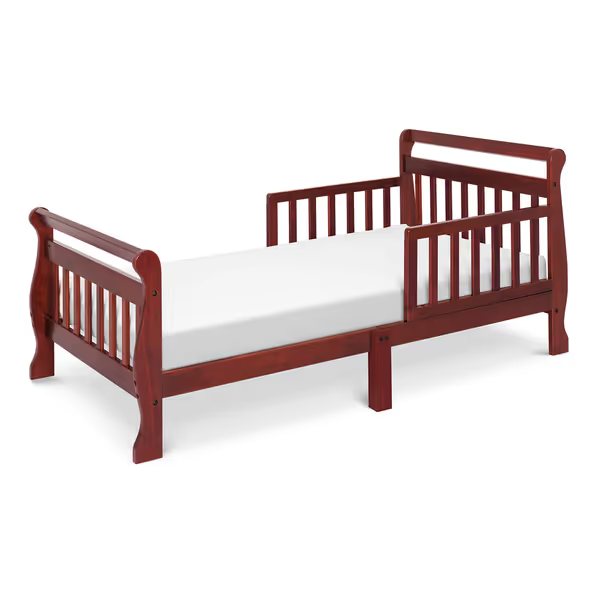
DaVinci Sleigh Toddler Bed
Space-Saving Safety Non-Negotiables
For apartments under 1,200 sq ft, prioritize these verified features over "aesthetic" designs:
- Footprint under 60" x 30": Ensures 24" clearance around beds (critical for fire exits)
- Edge radius ≥ 1": Tested via ASTM F2085 radius gauges
- Center of gravity below 8": Bed base must be wider/deeper than sleeping surface
- Zero loose hardware: All bolts fully recessed (no protrusions)
- VOC disclosure with third-party certs: Not just "non-toxic" claims
Avoid anything marketed as "junior bed," it's usually a twin frame hacked down, lacking toddler-specific stability. True age-appropriate toddler beds adhere to ASTM F1821 as primary design, not afterthought compliance. When you’re ready to shop, start with our space-saving toddler bed picks sized for small bedrooms.
When to Delay the Transition
Not all kids need beds at age 2. If your toddler:
- Panics when left in room alone
- Can't follow "stay seated" commands
- Sleepwalks or rolls violently
...wait. A 2021 Pediatrics study confirms delaying until 30+ months reduces falls by 37%. Use your crib's lowest mattress setting until then. Not sure it's time? Review the developmental readiness signs before you switch. No space for a crib? A floor mattress with removable guardrails (tested per ASTM F2388) is safer than a wobbly bed.
The Bottom Line
In tight spaces, safety isn't about bells and whistles, it's about boring physics. Measure actual room dimensions before buying. Reject any bed where you can't verify center of gravity, edge radius, and anchoring hardware. Remember: A bed that fits your floor plan but fails the risk hierarchy sacrifices your child's safety for square footage. Nip hazards upstream by treating each developmental stage as a new safety profile.

